Birds are amazing creatures that stand apart from all others in the world, and this is not only because of their feathers but also their ability to fly, and they can give you some interesting fun facts about birds for kids.
They are spread throughout all the climatic and geographic regions of this planet and come in a myriad of colors, forms and sizes.
One way kids can learn and appreciate birds is through these 18 fun and weird facts that show there is more to these wonderful creatures than just meets the eye.

Would you like to give your kids the opportunity to go birdwatching themselves? Then check out my blog post on the 7 best binoculars for kids!
1. There are more than 18,000 different bird species in the world.
The old estimate was at more than 10,000 different bird species but new research puts this number at over 18,000 species.
And counting individual birds, they range from 50 Billion to 430 Billion birds in the world. That is a lot of birds, no?!

2. Birds are the only animals on earth to have feathers.
Whether they are flying, swimming, or running on land, all birds have feathers.
Coupled with hollow bones for added lightness, most birds use their feathers during flight.
Feathers also keep birds warm and are an identifying feature as they come in a dazzling array of colors and sizes.
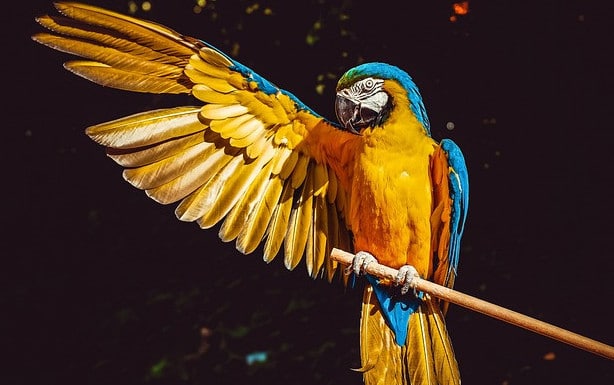
- Most birds will have between 1500 to 8000 feathers on their body.
The bird species with the lowest number of feathers are hummingbirds with just over 900 feathers.
This is to help reduce the weight they carry while flying. - Other birds such as the male Sandgrouse have specialized belly feathers that it uses to carry water from the source to their nest.
3. All birds lay eggs.
From the majestic ostrich to the tiny hummingbirds, all birds lay eggs that hatch new younglings.
Eggs are rather delicate, as many of you know when you prepare an omelet each morning, and they have to be handled with the utmost care.
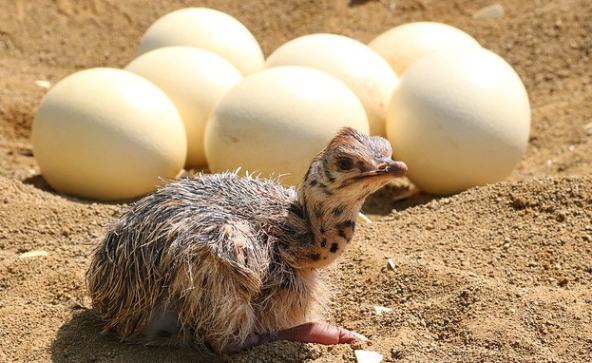
Birds will make nests, that vary from twigs, grass, leaves, feathers, and even rocks in the case of the Adelié penguins.
Some birds like the Common Cuckoo don’t fancy creating nests and will go ahead and lay their eggs in others’ nests, tricking other birds into raising their chicks for them.
The biggest eggs belong to the ostrich and weigh about 1.4 kg (3 lbs), equivalent to about 24 chicken eggs, with a diameter of 15 cm (6 in).
The smallest eggs among birds come from the bee hummingbird, at a diameter of just 2.5 cm (1 in).
4. Birds group together in flocks.
Another one of the fun facts about birds for kids is that the same species will move together in a synchronized manner in large flocks. Flocks have several purposes:
- Safety in numbers; protect them against predators.
- Helps the birds stay alert.
A good example is some duck species, whereby as they rest, those sleeping on the perimeter sleep with one eye open.
While all others are deeply asleep, these birds keep a part of their brain active and on the lookout for predators, raising the alarm if danger comes close. - For some like geese, the flock flies in a V formation which helps reduce the energy they use while flying; a reduction in drag.
5. Birds don’t have teeth.
Yes, even though birds evolved from dinosaurs that had teeth, they only have ridges that help them grip food.
Most birds you’ll find actually feed on seeds, fruits, plant materials, and small insects and do not prey on large animals, so no need for teeth.

Instead, they swallow their foods whole, which are then broken down by a muscular organ in the digestive tract known as a gizzard.
Birds of prey such as hawks, eagles, and vultures have razor-sharp and hooked beaks that can tear into prey and rip out chunks of meat.
6. The Ostrich is the largest bird on earth.
The ostrich is quite amazing, and here are just a few facts that showcase how:
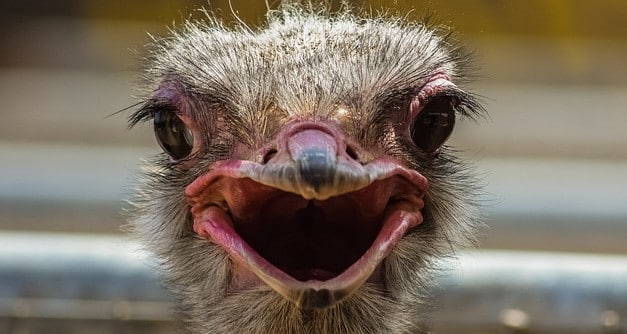
- They are flightless, and are the fastest birds on land, maintaining a speed of between 30-60 km/h (30-38 mph) for more than an hour.
They can reach a top speed of 78 km/h (48 mph), which puts them among the fastest animals on earth. - Although they are flightless, they have wings that they use to stabilize and change direction while running, just like a plane.
- They can weigh up to 150 kg ( 330 lbs), and reach a height of 2.7 m ( 8ft1in).
- Ostriches also have the largest eye of any animal on earth with heavy eyelashes to help shield them from the sun.
- Their muscled legs and clawed toes make them formidable to even big cats like lions, who hesitate before attacking.
7. The Bee Hummingbird is the smallest bird in the world.
Just how small is this bird? Well, it grows to only 5.7 cm (2¼ in). Here are other fascinating insights into the world’s smallest bird:

- It can only be found in Cuba.
- They are so small that they are sometimes confused with bees. They also have to compete for food with insects like bumblebees and hawk moths.
- They weigh less than 2 grams.
- The eggs laid by the female are about the size of a pea or jelly bean, and the nests are usually the size of an American quarter.
- Their wings beat at a frenzied 200 times in a second, faster than even other hummingbird species that have wing beats of about 80 beats per second.
- Flying is hard work, particularly for the Bee Hummingbird, and they have to eat their body weight in insects and nectar. In a day they are able to visit up to 1500 flowers.
- They have the fastest heartbeat in the animal kingdom at 1,260 beats per minute. (Humans in comparison only have a heartbeat of 72 beats per minute).
8. The Peregrine Falcon is the fastest bird in the world.
The Peregrine falcon is a bird of prey that hunts by flying high and then diving at its prey, striking with clenched talons, and relying on impact to stun and kill. During that hunting dive, they can reach speeds of 320 km/h ( 200 mph)
During normal flight, they average 50-55 km/h ( 25-34 mph), and can reach up to 112 km/h ( 69 mph) in direct pursuit of prey.
9. Wandering Albatross have the largest wingspan of any bird on the planet.
The Wandering Albatross is one of the largest birds in the world with the greatest known wingspan of 3.5 m ( 11 ft). Here are just a few facts about these great birds:
- Their great wingspan enables these birds to soar for more than 800 km (500 miles), and maintain up to speeds of 120 km/h (75 mph), for about 8 hrs without stopping; simply mind-blowing.
- Albatross can lock their elbow joints, which allows them to keep their wings extended for long periods of time without muscle input.
- They spend nearly all their lives on the water only coming to shore to feed and breed.
- Albatross fledglings once they mature will spend nearly all their time above the water.
Since touching down on water for extended periods of time puts them at risk of shark attacks, it is believed that they can even sleep while flying. - They are long-lived reaching up to 50 years.

10. The Arctic Tern migrates the longest of any known birds.
The Arctic tern migrates about 96,000 km (60,000 miles) in one year as they move from their breeding sites in the Arctic region to overwinter in the Antarctic region, and then back to the Arctic.
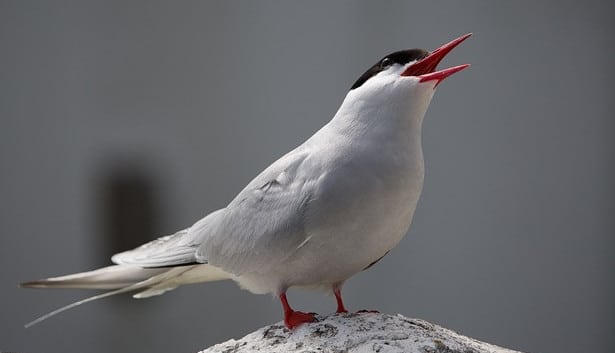
11. Kiwis have been given the title, ‘honorary birds’
Just like ostriches kiwis are flightless birds that are native to the island of New Zealand.
One theory on flightless birds is that they evolved in environments with low predation pressures that flight became unnecessary.
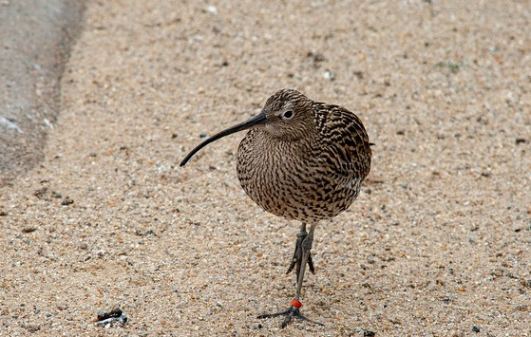
Kiwis have a few quirky features: their feathers feel like hairs, their bones aren’t hollow like on other birds but filled with bone marrow, and their nostrils aren’t at the base of the beak-like other birds, but on the tips of their nose.
12. Birds are some of the most intelligent in the animal world.
Below is a list of some extraordinary bird species, based on their level of intelligence.
Kea
These birds are basically parrots, that are native to New Zealand and have been listed as the most intelligent birds on earth. They are tricksters and very crafty when it comes to searching for food.

Corvids family
This family includes crows, ravens, jays, and rooks.
- Crows are at the top because of their ability to make tools, solve problems, consider future outcomes, remember faces, and reason out situations.
- Ravens just like crows are very smart, using tools, and in captivity, they mimic human sounds and speech even better than parrots.
In the wild, they will even imitate other predators like foxes or wolfs to attract them to a carcass they can’t open on their own.
African Grey
The African Grey is well known for its ability to mimic human voices and sounds perfectly.
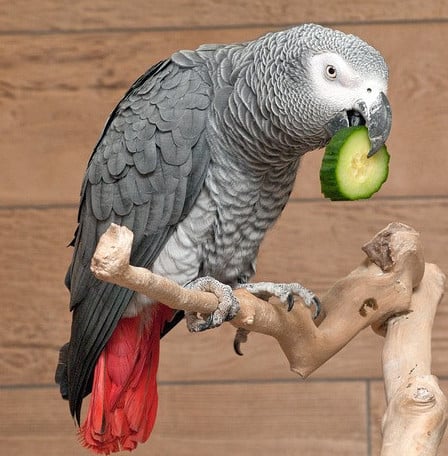
These thinking birds have the same intelligence as a six-year-old toddler, which is impressive among birds.
Other smart birds include Cockatoos, Macaws, and Amazon Parrots.
13. The Ruppell’s Griffon Vulture is the highest-flying bird in the world.
One of these majestic birds was documented at an altitude of 10,973 m ( 36,000 ft), though this discovery came at a cost: It was sucked into the engine of an airplane flying at that altitude.
They have a wingspan of about 2.5 m ( 8 ft), and just like other long wingspan birds, they use slow powerful wingbeats and rely on wind thermals to soar for long periods of time.
14. Penguins’ unique coloration works as an effective camouflage.
Penguins are flightless birds that have adapted to life in the water with webbed feet and flippers instead of wings.
Their coloration is also unique, with a black back and white front which is an effective camouflage system.

In the water, their black backs blend in with the dark ocean surface when looked at from above, while their white fronts blend in the lighter ocean water near the surface when looked from deep down in the water.
On land, they have so few predators that blending in isn’t a priority.
15. The common swift has been documented to have been airborne for 10 months straight!!!
The common swift has the record for the longest uninterrupted flight, which was at 10 months.
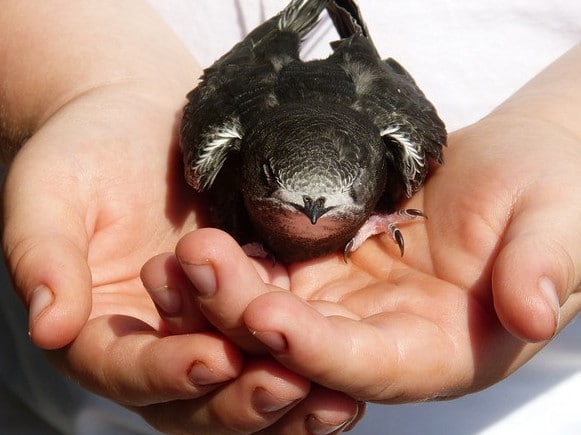
These birds can do just about anything while in the air, from feeding, resting, to breeding, and are not made to stay on the ground as they are ungainly and vulnerable.
16. The Cassowary is the most dangerous bird on the planet.
Just like Ostriches, Cassowaries are flightless birds and are rather big, standing up to 2 m (6 ft 6 in), and weighing as much as 60 kg (132 lbs).
What makes them so dangerous is their muscular feet, tipped with three clawed toes, with the inner toe reaching 12 cm (5 in) in length, more like a dagger.

This inner toe can inflict life-threatening wounds to internal organs.
17. When birds are migrating, they know where it is they are going.
Migratory birds are fascinating in that they travel, thousands of kilometers and will reach their destination accurately.
Birds migrate from areas of low resources to those of high resources, typically food and nesting locations.
Most long-distance migration of birds is usually from the Northern hemisphere to the Southern Hemisphere.
Even first-time flyers will instinctively know where to migrate to on their own and come back to their place of birth. How do they navigate:
- By use of Earth’s magnetic field, stars, and the sun.
- By using landmarks seen during the day and the position of the setting sun.
- For some birds such as homing pigeons, smell plays a huge role.
18. Scavenging birds merrily dine on meat that would make them sick or even kill other animals.
Scavenging birds like vultures and Marabou storks, literally snack on the dead; a very dangerous diet.
Dead animals or carcasses could be host to some nasty 🤢 bacteria such as those that cause Tetanus, Rabies, and Botulism.

Their stomachs are a very hostile environment with some incredibly potent acid that simply kills most micro-organisms; an iron stomach.
Due to their eating habits, they are simply indispensable to the ecosystem as they help clear it of dangerous pathogens.
Simply put, they are nature’s garbage collection crew.
My Final Conclusion.
I hope that you, and your kids :-), have enjoyed this blog post on the 18 most fun facts about birds for kids!
If you have any more questions about this topic or any other topic on birds, please feel free to leave a comment below in the comment section.
Or you can always join my social media pages or Facebook group to watch some more pretty pictures!
I wish you happy birding!
Kind regards,
Lizzy
I now have a YouTube channel as well!
YouTube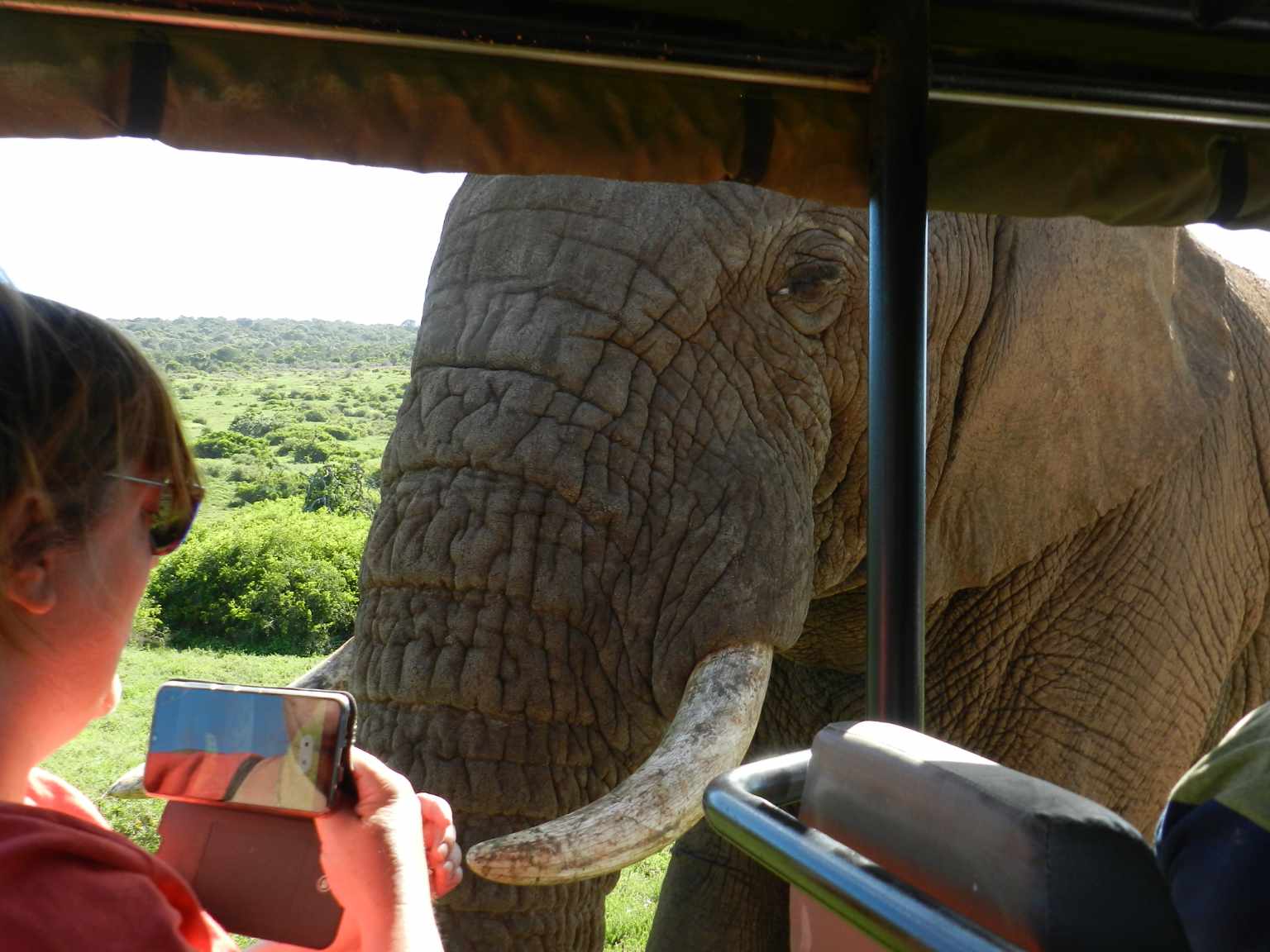
Hello Africa travellers!
Who am I? Well, the least you can say is that I am quite crazy about Africa, its nature, its climate, its culture, and more.
As a young woman in my twenties, I had already traveled to several African countries by traveling along in an overlander on my own and mostly camping ( or glamping ) and just fell in love with the diversity of it all.
So much, so that at the age of 26, I went back to university to study biology, which, unfortunately, I couldn’t finish because of health reasons (yes, I got sick from a tropical disease, oh cynicism). But this did not stop my dream of traveling back to Africa several times, and I still do.
My dream was back then to leave Europe and go study animal behavior, especially the elephants (sure, that’s every girl’s dream haha), but I am also very much intrigued by hyenas and other “ugly African animals“.
So, I “kind of” have a little bit of a scientific approach to my articles, when I write about African birds, for example. And most of all: the passion.
But life goes on, you move from one side of the country to the other, you get sick again and top it off with lower back problems, and before you know it, you are over 50 hahaha!
Now, I still travel to Africa, but take it a bit “easier” than the good old camping days, and stay in comfortable, yet affordable accommodations, together with my husband Wouter.
These are some of the countries I have traveled to: Kenya, Tanzania, Zanzibar, Malawi, Zambia, Zimbabwe, South Africa, Namibia, Botswana, Tunisia, and a little bit of Lesotho LOL .
While clearly not being African territory, but Spanish, I also visited Gran Canaria and Tenerife, and location-wise, I consider them “African”, because of their climate and nature, sue me :-p
The last trip I took was to South Africa in the year 2023, and it sure got the fevers for Africa back! From the Barberton mountains to the Drakensberg and the Southcoast, one month wasn’t enough at all to see the whole country, so we’ll be back! At ease and with a little bit more luxury than in my younger days haha!
I wish you happy travels!
Kind regards
Lizzy

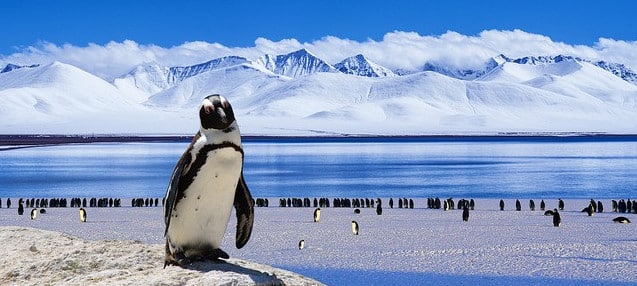
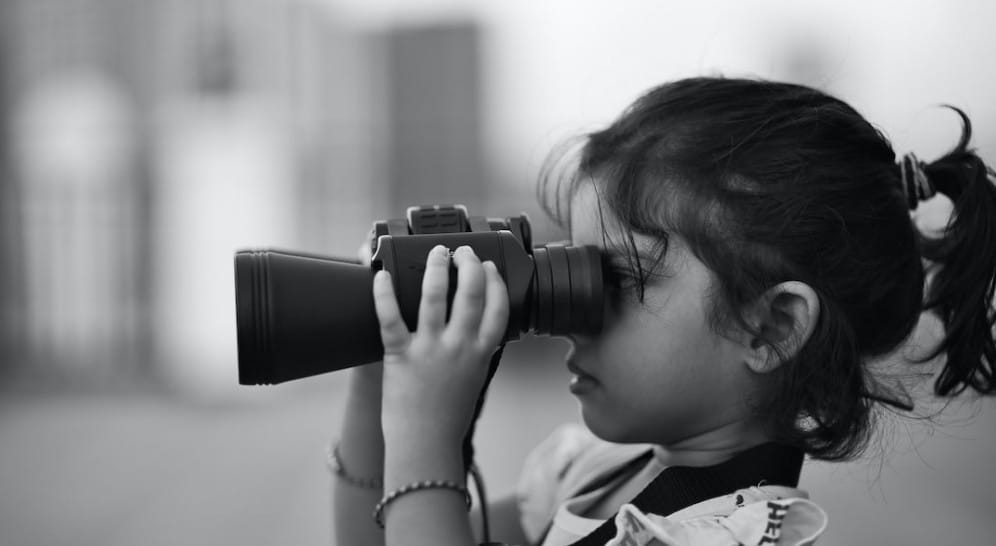
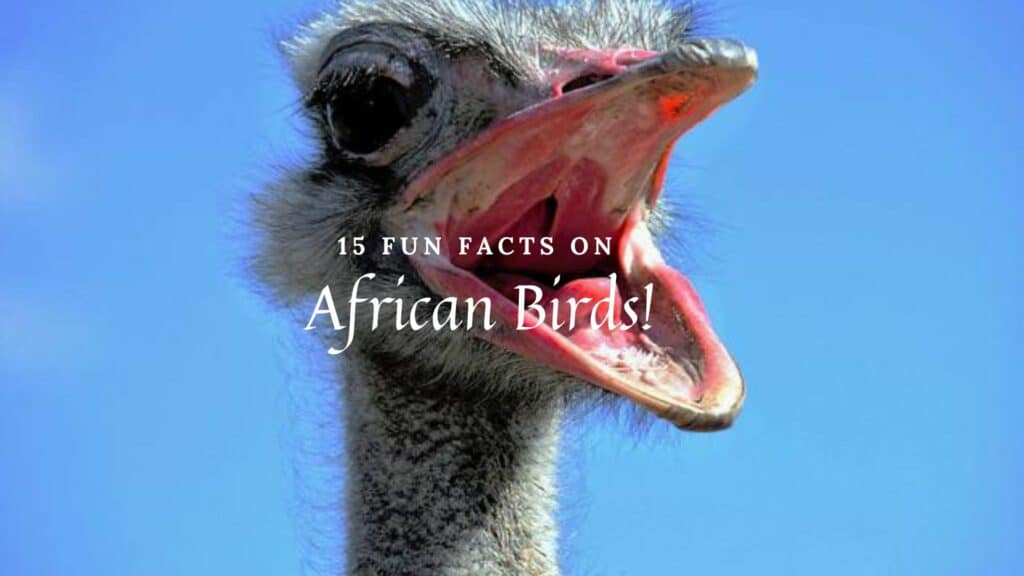
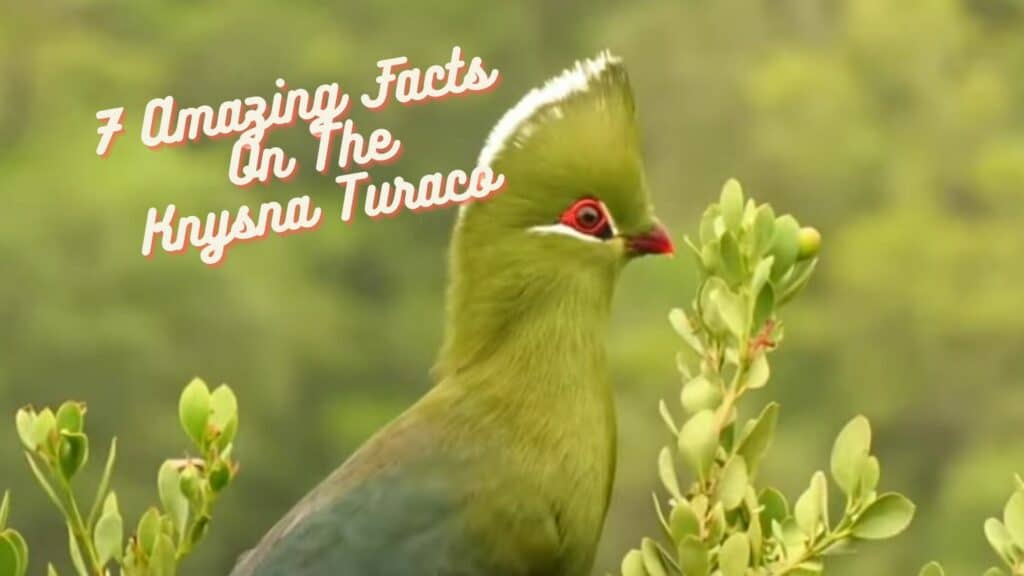

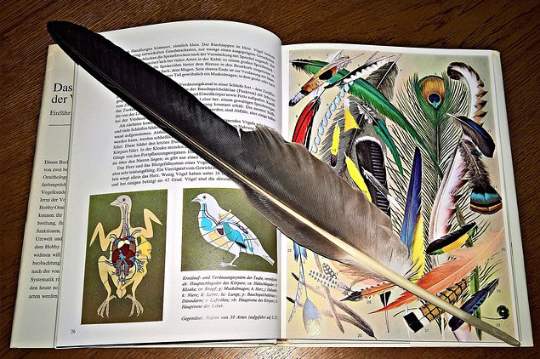
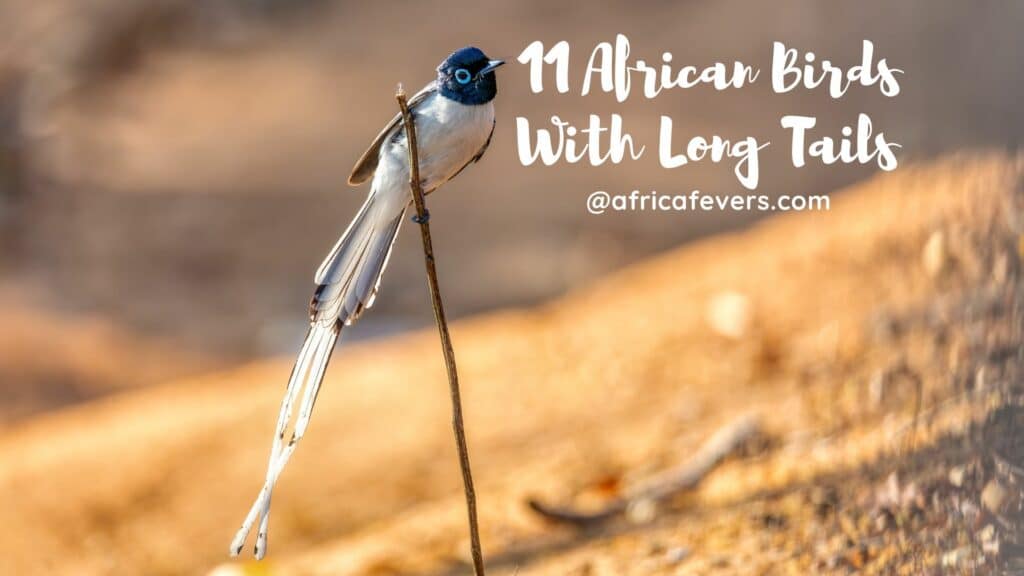
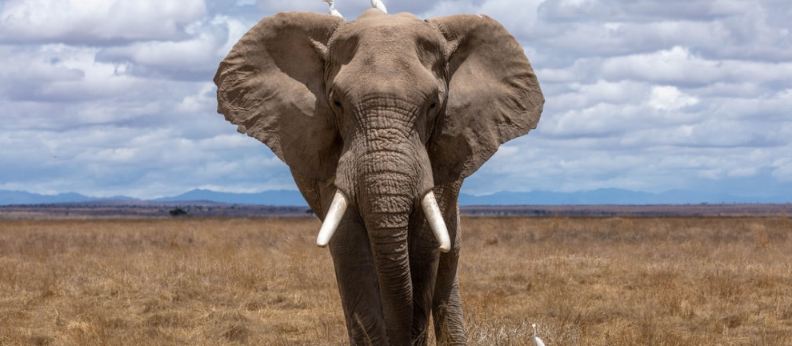

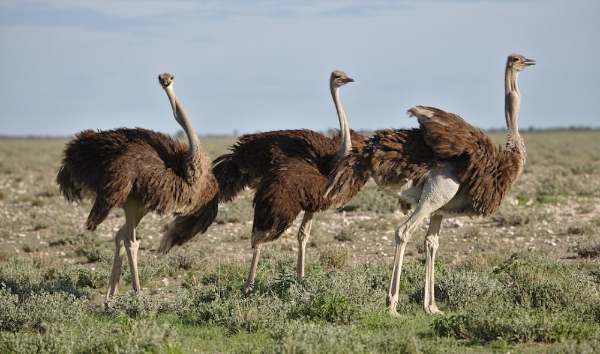
This is some great information and designed very nicely for children. I’m a grandfather and I really enjoyed it. My daughter is a home-school mom and this resource will come in very handy for her as her children love birds. I hope you produce more content like this. Do you have a favorite bird? I love bald eagles because of their majesty, but I also really like the colorful birds like Lorikeets.
Hi Scott!
Thank you for your positive comment and yes, birds are very interesting for kids, my nephew loves them as well, so I bought him binoculars and he sure does use it 🙂
A favorite bird is quite hard to say for me, they are all so pretty or peculiar 😉 There is something about vultures though, not really “pretty”, but very intriguing indeed.
Happy birding and learning for your granddaughter!
Kind regards
Lizzy
I found this information about all the birds to be extremely interesting. I also found out that a couple of things I believed about birds weren’t the truth. I also didn’t realize just how smart Crows are being able to solve problems and consider the future. I had heard before that they remembered faces but didn’t know if it was actually true or not. This was truly informative.
Hi Siobhan!
Thank you for all the compliments and I wish you and your kids happy birdwatching! 🙂
Kind regards,
Lizzy